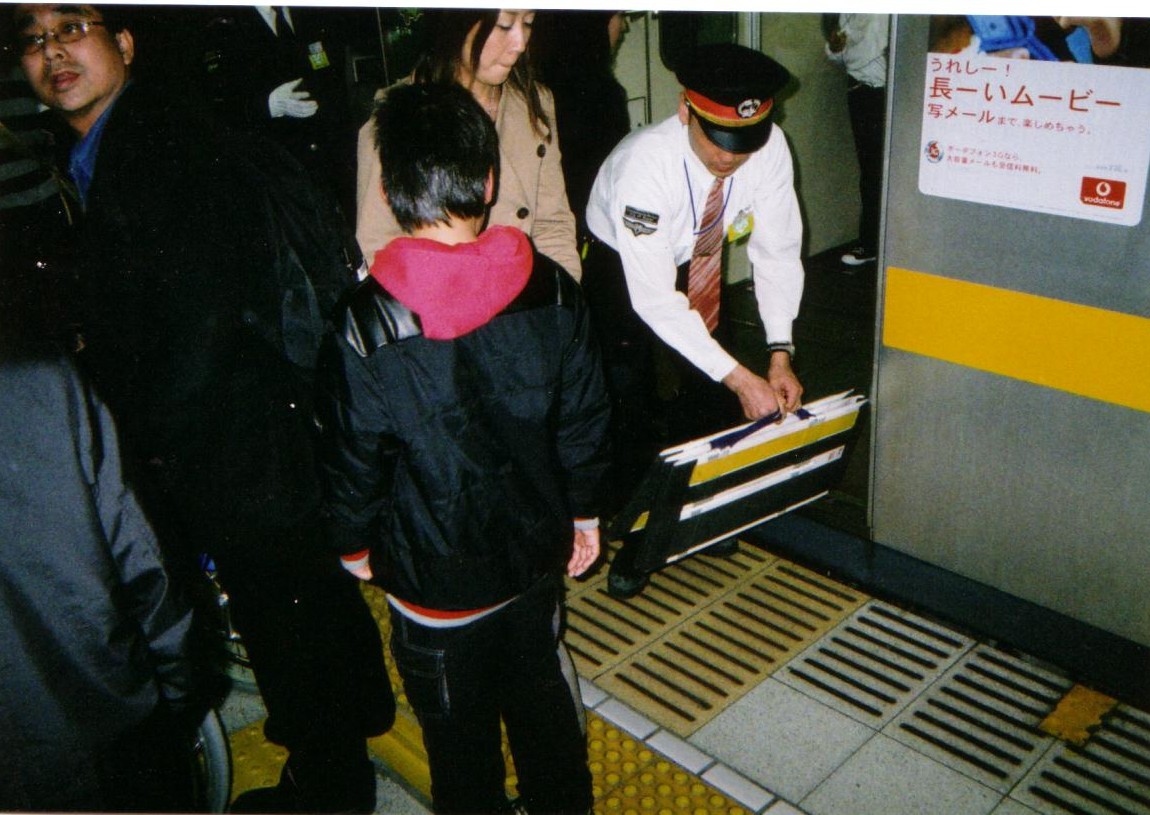

| Simplified buses - for all
Reasons Given the prospects for higher fuel prices, the large natural gas operated buses should probably be kept. However, the other large and high buses run by most metropolitan transit agencies are overkill. They contain expensive automated "kneeling" systems which still require the driver to get up, bring the wheelchair in, and then secure it with two locks into position. New types of extendable ramps as in the pictures below could also be used in lieu of the massive engineering modifcations needed to make buses "kneeling". The disdavantage of using huge buses with lengthy stop procedures for the handicapped is that they end up behind each other, and are to large to pass by passenger vehicles as they truly occupy the full lane. Two handicapped stops by one bus are often lengthy enough to bring the next bus right behind it, and colums of three buses are seen often in San Diego, for example. A much better choice is to operate smaller van-type buses, or possibly design a new half-height bus, a double decker with no standing spaces: the inside roof is velvet covered and passengers are expected to seat themselves into reclined compartments, and need to bend their heads while entering. Such buses can keep up with cars, and are on time. In the meantime the handicapped get a separate flexible van system, the status of which can be transmitted to a cellphone map display to reassure them of arrival. The images below demonstrate a hand-carryable ramp system in use in Japan. |

